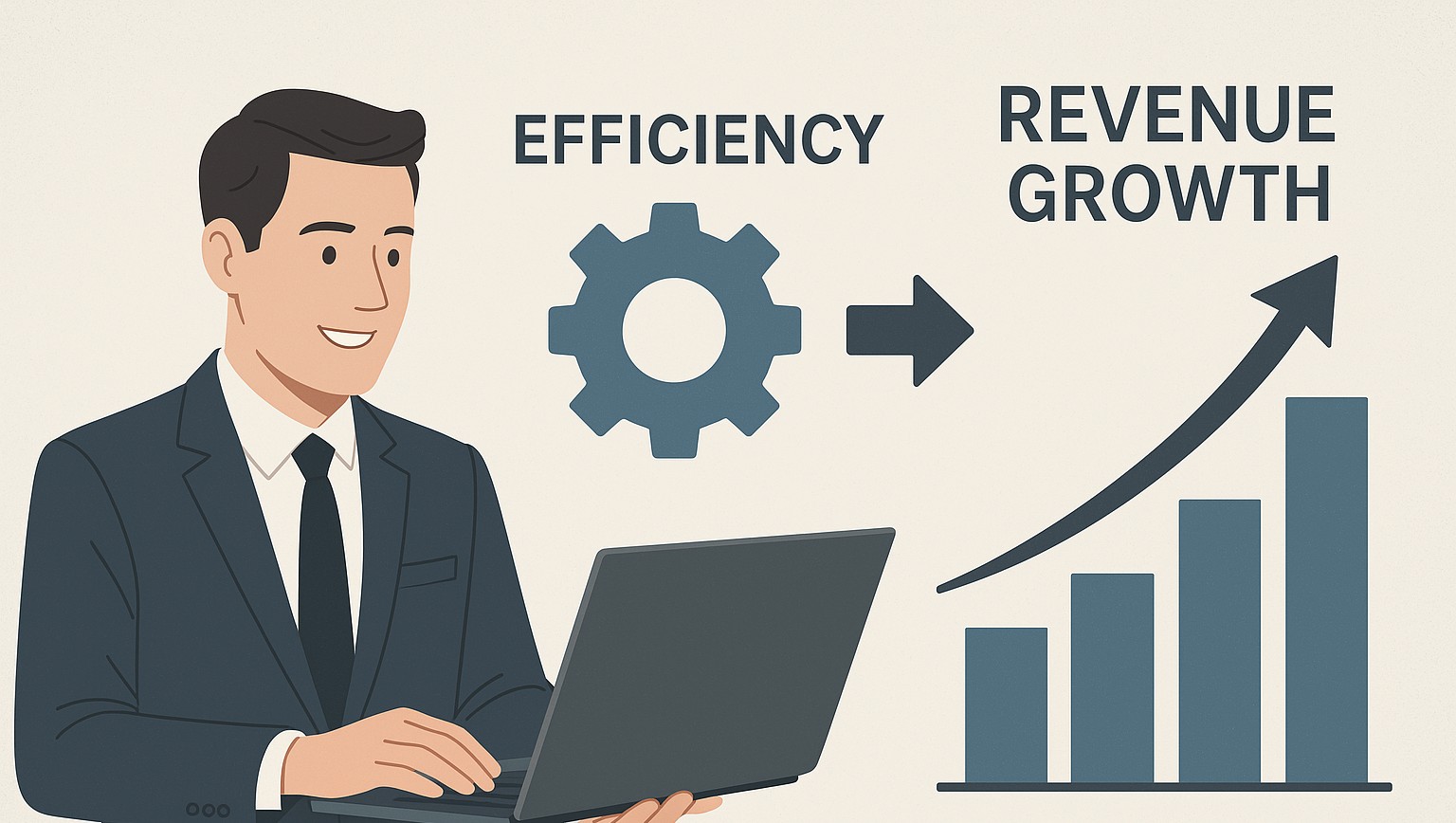A structured sales process is critical for converting leads into loyal clients and growing your MSP business. From initial discovery calls to deal closure, this guide walks you through the essential steps. Using it, you can consistently nurture prospects and improve conversion rates.
Key Steps to Building a Winning MSP Sales Process
1. Define Your Ideal Client Profile (ICP)
Actionable Tips
- Identify industries, company sizes, and pain points where your services provide the most value.
- Consider factors like compliance requirements, technical complexity, and willingness to invest in IT services.
Key Insights
- MSP Benefit: Focusing on your ICP helps you allocate resources to the most high-value prospects.
- Client Benefit: Targeted outreach demonstrates an understanding of their specific needs.
Next Steps
- Develop a one-page document outlining your ICP and share it with your sales and marketing teams.
- Revisit and refine your ICP quarterly to ensure it aligns with evolving market trends.
2. Develop a Discovery Call Framework
Actionable Tips
- Prepare a list of key questions to uncover client needs, such as:
- What are your top IT challenges today?
- How do you currently handle cybersecurity or backups?
- What’s your long-term vision for your business’ IT?
- Use the call to assess the prospect’s budget, decision-making process, and timeline.
Key Insights
- MSP Benefit: Discovery calls lay the groundwork for tailored proposals.
- Client Benefit: Prospects feel heard and understood from the start.
Next Steps
- Train your team to follow a consistent call structure.
- Record calls (with client permission) to identify improvement areas and ensure quality.
3. Qualify Leads with a Scoring System
Actionable Tips
- Assign points to leads based on factors like budget, urgency, and alignment with your ICP.
- Use tools like CRMs to track and score leads automatically.
Key Insights
- MSP Benefit: Lead qualification prevents wasted time on low-potential prospects.
- Client Benefit: Qualified leads receive faster, more tailored solutions.
Next Steps
- Establish scoring thresholds to prioritize which leads will move to the next stage.
- Reassess lead scores after every interaction to ensure accuracy.
4. Create Tailored Proposals
Actionable Tips
- Highlight solutions that address the prospect’s specific pain points and business goals.
- Include visuals — like cost breakdowns, timelines, and ROI projections — to make the proposal more compelling.
Key Insights
- MSP Benefit: Customized proposals increase your chances of closing deals.
- Client Benefit: Tailored presentations build trust and confidence in your MSP.
Next Steps
- Use proposal software to streamline creation and tracking.
- Include an option for electronic signatures to speed up approval.
5. Follow Up Consistently and Strategically
Actionable Tips
- After key meetings or proposal submissions, send follow-up emails within 24–48 hours.
- Share additional value — such as case studies, testimonials, or industry insights — in your follow-ups.
Sample Follow-up Email Template
- Subject: “Following Up on Our IT Solutions Discussion”
- “Hi [Client Name],
I wanted to thank you for your time and share additional details about how we’ve helped businesses like yours. Let me know if you’d like to schedule a follow up to dive deeper into our proposed solutions. Best regards, [Your Name].”
Key Insights
- MSP Benefit: Timely follow-ups keep you top of mind with prospects.
- Client Benefit: Prospects appreciate the attention and personalized touch.
Next Steps
- Use CRM tools to automate reminders and track follow-up progress.
- Schedule weekly team reviews to ensure no leads fall through the cracks.
6. Overcome Objections Confidently
Actionable Tips
- Prepare responses to common objections, such as:
- “Your services seem expensive.” → “Our pricing reflects the value of proactive monitoring and how it saves money long term by preventing downtime.”
- “We’re already working with another MSP.” → “We often help businesses transition smoothly from existing providers while improving service delivery.”
Key Insights
- MSP Benefit: Addressing objections effectively builds credibility.
- Client Benefit: Clear answers reassure prospects and reduce hesitation.
Next Steps
- Role-play objection handling with your sales team during training sessions.
- Document common objections and refine your responses over time.
7. Close Deals with Confidence
Actionable Tips
- Summarize agreed-upon terms and next steps in writing before finalizing the contract.
- Use urgency to encourage action, such as limited-time discounts or service availability.
Key Insights
- MSP Benefit: A structured closing process ensures clarity and reduces post-sale issues.
- Client Benefit: Clear terms and expectations lead to smoother onboarding.
Next Steps
- Schedule a kickoff call immediately after closing to start building momentum.
- Send a welcome package with onboarding details to reinforce professionalism.
Checklist: Building a Winning MSP Sales Process
1. Do You Have a Well-defined Ideal Client Profile (ICP)?
- If Yes: Share your ICP regularly with sales and marketing teams for process alignment.
- If No: Develop your ICP and focus on refining it over time.
2. Are Your Discovery Calls Structured and Consistent?
- If Yes: Periodically review call recordings to identify areas for improvement.
- If No: Create a discovery call framework and train your team to use it effectively.
3. Do You Use a Lead Scoring System to Qualify Prospects?
- If Yes: Adjust scoring criteria quarterly based on performance data.
- If No: Set up a scoring system in your CRM to prioritize high-potential leads.
4. Are Your Sales Proposals Tailored to Each Prospect?
- If Yes: Use client feedback to refine your proposal format and content.
- If No: Invest in proposal software to streamline customization and improve professionalism.
5. Are Your Follow Ups Timely and Value-driven?
- If Yes: Experiment with new sales process follow-up tactics, like sharing video testimonials.
- If No: Create a follow-up schedule and ensure team accountability.
6. Is Your Team Prepared to Handle Objections Effectively?
- If Yes: Encourage your team to document new objections and refine their responses.
- If No: Hold regular training sessions to improve objection-handling skills.
7. Do You Have a Structured Sales Closing Process?
- If Yes: Focus on post-sale onboarding to reinforce a positive client experience.
- If No: Develop closing scripts and templates to streamline the process.
Conclusion
A winning sales process transforms leads into loyal clients by creating a structured, repeatable journey from discovery to closure. Use this guide and companion checklist to build confidence in your sales team and consistently improve conversion rates.
Next Steps
- To get more helpful guidance on this topic, check out our Marketing and Sales Answer Center.
- Have a question for our experts? Send it to editors@channelpronetwork.com
ChannelPro has created this resource to help busy MSPs streamline their decision-making process. This resource offers a starting point for evaluating key business choices, saving time and providing clarity. While this resource is designed to guide you through important considerations, we encourage you to seek more references and professional advice to ensure fully informed decisions.
Featured image: iStock















